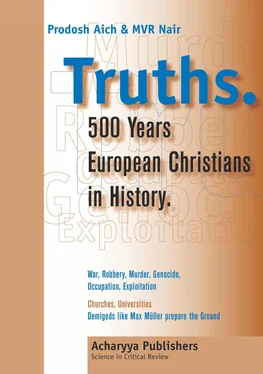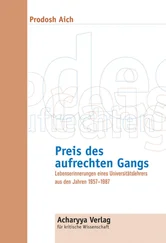There is a reference of one Waldemar Wilhelm von Anhalt-Dessauborn on May 29, 1807 in Dessau, died 1864 in Vienna. He was a son of Prince Frederick von Anhalt-Dessau(1769-1814) from his marriage with Christiana Amalie(1774-1846), daughter of the Landgrave Frederick V of Hesse-Homburg. He married “morganatic”on 9 July 1840 Caroline Emilie(1812-1888), the daughter of a court musician, Karl Friedrich Klausnitzer, in Dessau. Caroline Emiliewas raised to a “wife of a Baron”while Waldemar Wilhelm von Anhalt-Dessaulived incognito the life of a baron William Stolzenbergin Vienna, where he and his wife adopted in 1855, the daughter of his brother Georg, the Countess Helene von Reina (1835-1860).
We are left alone with these references. Even if we considered that Max Müllermight have meant these two in Vienna, we cannot overcome one puzzle. The questions invariably arise, how Caroline Emilieat the age of 28, and Waldemar Wilhelmat the age of 33, could have known in 1840(the year of their “morganatic” marriage) that they won’t have children in their marriage? Therefore they wanted to adopt the cousin-brother of Caroline Emilie, Friedrich Maximilian, who was then 17 years old and just passed his high school?
Apart from this puzzle, we also note that Caroline Emiliebecomes the “wife of a Baron” in 1842. We recall that an offer was made to Friedrich Maximilianbefore he is admitted at the Leipzig University in 1841.
To other young men this might have seemed irresistible. I at once said no. It seemed to interfere with my freedom, with my studies, with my ideal of a career in life; in fact, though everything was presented to me by my cousin as on a silver tray, I shook my head and remained true to my first love, Sanskrit and the rest.
( Max Müllermay tell his stories. But the fact is that Friedrich Maximiliancould not have “remained true to my first love, Sanskrit and the rest” as Sanskrit and the rest were unknown at Dessau, Leipzig and Zerbst during his school days.)
Hagedorn could not understand this; he thought a brilliant life preferable to the quite life of a professor Not so I.”
CHAPTER 4 WHICH QUALIFICATIONS DOES
FRIEDRICH MAXIMILIAN ACQUIRE AT
LEIPZIG UNIVERSITY?
We are reconstructing the life of Friedrich Maximilian Mülleras it was. We have done our research - we mean re-search – getting into the primary sources. We have searched for facts and for the facts behind the facts. All existing secondary sources are fed by the writings of Max Müllerand by his British wife Georgina Max Müller. We are crosschecking now the stories told by Max Mülleron the biography of Friedrich Maximilian Müller. Thereby we stick to working out hard facts only.
Friedrich Maximilianavails the privilege, when he is 12 years old, of staying in the affluent household of Professor Carusand of being taught in the famous Nikolai-Schule at Leipzig. We find absolutely no information on how Friedrich Maximilianfared in that famous school. We know from Max Müllerthat Friedrich Maximiliandid not take his “Abiturienten-Examen” at the Nicolai school. He does not disclose the reason behind it. He simply states it was hard for him. What is behind this fact?
With “Abiturienten-Examen” (high school certificate) one earns in Germany the right to enter universities for higher studies. This rule is valid since centuries. The lower the marks, the fewer are the choice of subjects. This was the rule then and this is the rule this day as well. There were and are, of course, high schools maintaining different standards. Teachers of the Nicolai-Schule at Leipzig were fair enough suggesting Friedrich Maximilianto try his “Abiturienten-Examen” at a school where the standard was not as high as it is in the Nicolai-Schule. As a rule, such suggestions are given after the 11th class, i.e. two years before the “Abiturienten-Examen”.
This hard fact that Friedrich Maximilianwas compelled to take refuge at a school having a lower standard and less reputation has not been noticed by any of his biographers or admirers yet. Max Müllerpacked it so elegantly and served so slyly in “My Autobiography” that the focus is shifted to the need of a “scholarship”. We recall the statement given by Max Mülleron this issue two years before he expired:
“It was rather hard on me that I had to pass my examinations for admission to the University (Abiturienten-Examen) not at my school, but at Zerbst in Anhalt. This was necessary in order to enable me to obtain a scholarship from the Anhalt Government”.
We apologise to look a little ahead. Friedrich Maximilianwill get a scholarship from the “Anhalt Government”. It was not a scholarship on merits, nor was it any school-bound. He got a scholarship for poor students belonging to the Anhalt-Dessau-Duchy. He would have got this scholarship even if he could have passed his “Abiturienten-Examen” in any other European country. Not to talk of his getting “Abiturienten-Examen” from the famous Nicolai School. This hard fact does not fit into a school career of a brilliant brain, of a to-be demigod, isn’t it?
We were also puzzled calculating the years exactly. Friedrich Maximilianhad begun school in Dessau when he was six years old. He came under the guardianship of Professor Caruswhen he was 12 years old. At most, he could be admitted in the Nicolai School in the seventh of 13 classes needed for the “Abiturienten-Examen”. He would have stayed in the household of Professor Carusfor sevenyears in the normal case. It is however mentioned that he stayed there for fiveyears only. Where did he stay for two years of his school life? He must have stayed “at Zerbst in Anhalt” for two years to attend the school there. We pointed out in our last chapter that a “Zerbst in Anhalt” did never exist in the history. Zerbst was in Prussia.
There is another puzzle calculating the years. 13 classes plus 6 makes 19. Friedrich Maximilianwas born in December 1823. He was admitted in Leipzig University in April 1841. He was then 17 and half years old only. He must have skipped one class. Where and how? On what basis?
Then, why did he not get back to his previous school at Dessau where his mother and all his relatives were residing? These questions remain unanswered. We wonder that Max Müllerdid not even mention the name of the school at Zerbst. None yet has wondered. Why? We think this aspect is important and we are reluctant to speculate. But our questions remain. There are more questions.
We take liberty repeating a small part from the beginning of our last chapter to be accurate rather than narrating. We wrote:
“The source Georgina Max Müller is inadequate. As referred in the last chapter she marries Friedrich Maximilian Müller 1859. She is then 24 years old. She belonged to a copper-smelter and merchant family in the British Kingdom. Her educational background is unknown. Both of her volumes include in the main letters written in German, translated into English. We are unable to ascertain whether she ever learnt German.
Читать дальше












